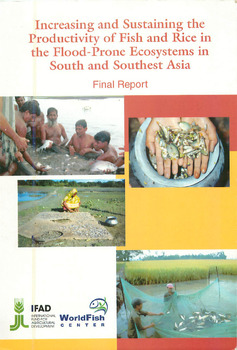Increasing and sustaining the productivity of fish and rice in the flood-prone ecosystems in south and southeast Asia (Tag 350): final report to the International Fund Agricultural Development

Citation
The WorldFish Center (2002). Increasing and sustaining the productivity of fish and rice in the flood-prone ecosystems in south and southeast Asia (Tag 350): final report to the International Fund Agricultural Development. WorldFish Center. Penang, Malaysia. 94 p.
During the rainy season in extensive river floodplains and deltaic lowlands, floods lasting several months render the land unavailable for crop production for several months each year. These waters are considerably underutilized in terms of managed aquatic productivity. This raises the opportunity to enclose parts of these floodwater areas to produce a crop of specifically stocked aquatic organisms aside from the naturally occurring 'wild' species that are traditionally fished and are not affected by the culture activity, overall resulting in more high-quality, nutrient-dense food production and enhanced farm income for all stakeholders, notably the poor. The WorldFish Center and its national partners recently tested the concurrent rice-fish culture in the shallower flooded areas and the alternating rice and fish culture in the deep-flooded areas of Bangladesh and Vietnam through a community-based management system. Results indicate that community-based fish culture in rice fields can increase fish production by about 600 kg/ha/year in shallow flooded areas and up to 1.5 t/ha/year in deep-flooded areas, without reduction in rice yield and wild fish catch.
Permalink
Date Available
Type
Publisher
Countries
Copyright
CC BY 4.0
Research Themes
Topics
Language